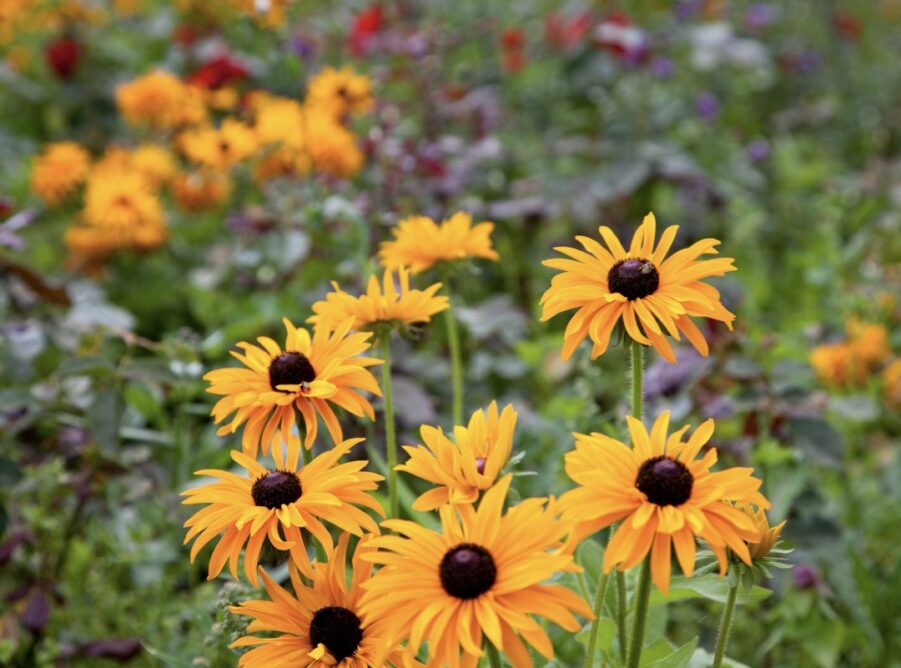Natural gardening is an increasingly popular way to reduce environmental impact while creating beautiful outdoor spaces. These spaces can also support wildlife, which is another good thing for the planet. In addition, they provide opportunities to encounter and learn about nature right at home. This Outdoor Tips mini-series on Gardening for Wildlife will help you create back-yard ecosystems at home. These posts also provide background knowledge of biology and common plants and animals to help you design your wildlife garden to suit your needs.
Since no garden is the same and different tips work for different situations, I’ll be sharing a variety of methods. If you haven’t already, be sure to check out Gardening for Wildlife Part 1.
So what are some more ways you can bring wildlife to your outdoor space?
6. Keep chemical fertilizers, herbicides, and insecticides to a minimum
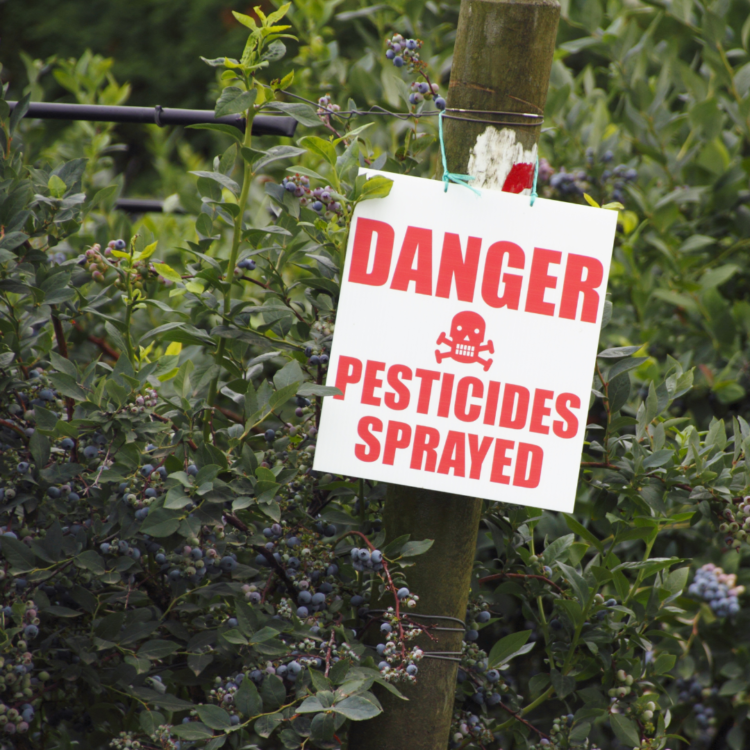
No matter how you look at it, chemical insecticides and herbicides will negatively impact any wild guests to your garden. In other words, you’ll see fewer native species of plants, fungi, and animals in your outdoor spaces.
The fact is, herbicidal (plant-killing) and insecticidal (bug-killing) chemicals are rarely target-specific. This means that they kill all sorts of things, putting welcome guests like wildflowers, bumblebees, and butterflies at risk. In the process of trying to get rid of grubs, you are also destroying valuable “natural enemies” like predatory wasps that might take care of them for you at a lower cost.
Beyond that, these harmful chemicals can be flushed out of your yard or garden during a rain, and contaminate natural areas. The harm that they cause can go far beyond your neighbor’s fenceline. Decades of research in entomology and urban ecology show repeatedly that these chemicals mean fewer insects, especially helpful pollinators and pest-eaters, and fewer species. This less wildlife and fewer of their valuable benefits to your garden.
Just like having less lawn, reducing or eliminating your use of pesticides is a great way to help the environment by doing less. It’s cheaper and saves you time, and the benefits will grow across time as new wildlife species find your garden and make themselves at home. Reducing your use of pesticides and other chemicals is an easy and affordable first step toward natural gardening.
7. Put up wildlife houses

Just like people, animals of all kinds need safe places to rest, make their home, and raise their young. Although many animals can “commute” to your garden, there are distinct advantages to giving them places to stay.
First, you’ll ensure that less mobile animals can thrive.
Secondly, you’ll get a closer look into their entire lives. This is a major bonus from a nature-nerd perspective. For example, you could see how leafcutter bees build their nests, or how swallows feed their chicks as they grow older.
Building housing for animals is sure to attract a greater number and diversity of fascinating species, one of the best benefits of natural gardening. Let’s look through a few options:
Birdhouses (nest boxes)
Birdhouses, or as bird-nerds call them, nest boxes, are a classic feature for bringing wildlife to your yard. They typically consist of a box that is closed on five sides and has a hole for an entrance in one side. These structures imitate the natural cavities or holes that may occur in dead parts of trees. Woodpeckers commonly make cavities in dead trees, which they use for shelter and nesting.
Other animals, including many bird species, make use of these and other naturally occurring cavities for their own nests. By putting out birdhouses, you can provide nesting spots for certain bird species. I’ll have a list of species you can attract with birdhouses, and tips on where to place them, in a future post.
Here are some good, basic birdhouses for back-yard use:

Audubon Coppertop Cedar Bluebird House

Uncle Dunkel Wren and Chickadee House, Pine and Poplar Wood

Uncle Dunkel Nesting Platform for Robins, Doves, Cardinals & House finches
Bat houses for Natural Gardening
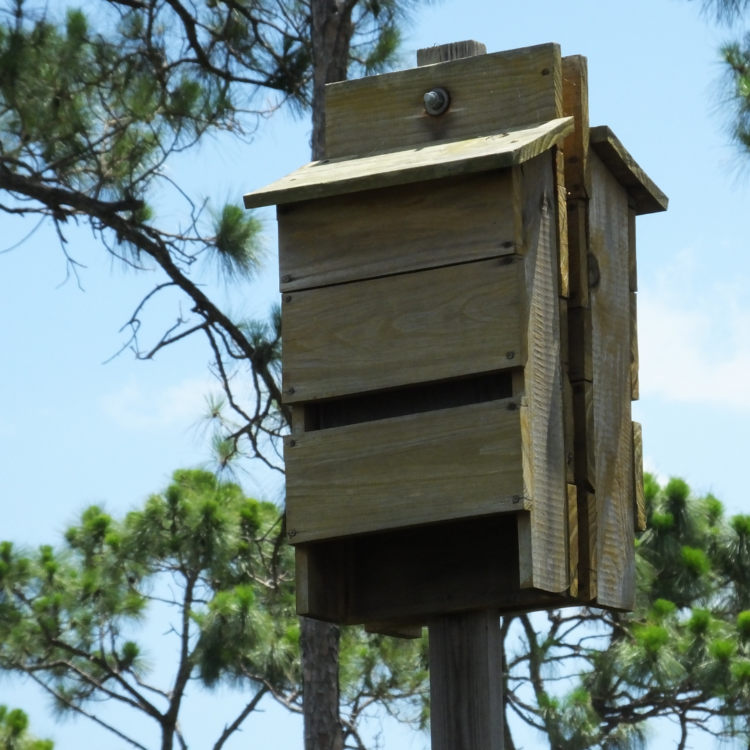
Supporting nocturnal wildlife is important, too! Even though you may not get to watch them during the day, bats are ecologically important and could use our help. In fact, any common bat species are super-effective bug eaters, with a taste for harmful pests.
Unfortunately, bats are declining throughout the United Kingdom and in North America. Offering them a safe place to stay can go a long way. This is especially true in urban and suburban habitats, where they may have a hard time finding shelter.
Bat houses typically have flattened openings to wider chambers. The entrances face downward so bats can fly in and climb up. Unlike with birds, most bats roost communally, so many individuals may shelter in one bat house. Thus, it may be more appropriate to call them bat hotels. Nonetheless, putting one of these up in a tree or another high up location could do bats a lot of good.
If you’d like to build your own bat house, be sure to follow the guidelines from bat conservationists.
Bee hotels
Ok, so I promise these are as cute as they sound. While honeybees (Apis mellifera) live in hives, many other important garden bees make other kinds of homes. If you’re in North America, honeybees aren’t even native to your garden. This makes supporting native bees even more important. It sounds strange, but most of these bees don’t live in hives of any kind.
In fact, many of them are a lot like birds. That is, they pair up and mate rather than live in colonies. Then, an individual female makes and tends a nest of babies. Bee hotels provide lots of nooks and crannies for native bees to build those nests. Unlike many birds, bees don’t mind living in relatively close quarters, so hotels work just fine.
Bee hotels are a great way to not only support native bees but to better observe how they live their lives. You may be surprised what you find!
Suggested bee hotels for nature gardens
Here are some well-built bee hotels that other naturalists have had some success with. If you’re feeling crafty, making your own is relatively straight forward!

JC Wildlife Lumber Mason Bee Hotel for Mason Bees


Gate 35 Eco-Friendly Hotel for multiple species
8. Make a water source
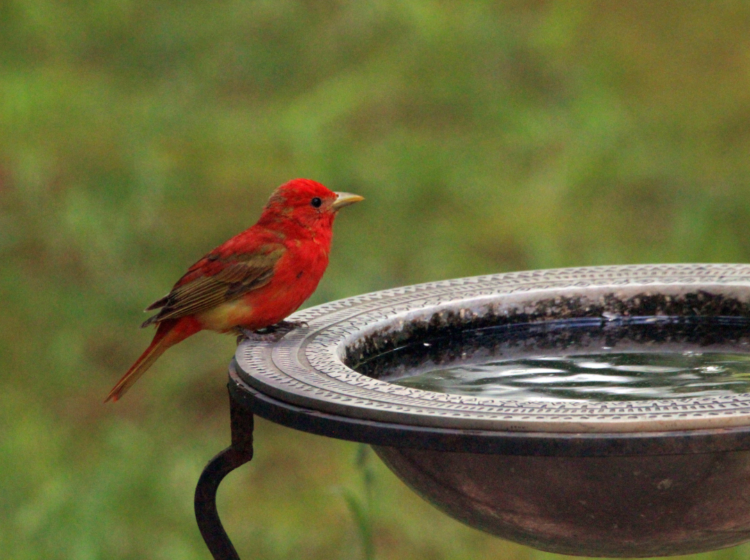
Just like humans, all animals need water to live. In drier climates, or hot, dry parts of the year like late summer, water sources can be hard to find. By providing this essential resource on your property, you are sure to draw more wildlife guests. Depending on the type of source, you can also use it to cultivate garden plants that live in water!
The nice thing about a water source is that there are wildlife that will use water sources of any size. If you want something big and flashy, you can always make your own back-yard pond. On the other hand, bird baths are a much more modest option.
Even a little bowl of water could attract interesting insects and support local bees if you care for it properly. In other words, no matter what size water source you make available, it will be sure to attract wildlife! Water sources will get more attention in drier climates or hotter times of year. Water features are an important and helpful part of any natural garden.
Check out my Nature Guys episode on vernal pools to hear about Bob’s adventure constructing his own backyard water feature!
9. Get a bird feeder for natural gardening

Food is a powerful draw for wildlife. One of the easiest and safest (for us and the wildlife!) ways to provide food to outdoor critters is birdfeeders. Feeding birds responsibly and safely can help birds get through tough times of year. Of course, birdfeeders will also bring in other animals. In North America, for example, they can attract squirrels, raccoons and even the occasional bear. Generally, though, birds will be what you’re after, and birds are what you’ll get.
What kind of birds you attract will depend on the type of bird food you provide. For example, Goldfinches (Spinus sp.) really like thistle or nyjer seed, while other species may prefer sunflower seeds. On the other hand, suet feeders are particularly attractive to woodpeckers. If it’s hummingbirds you’re after, check out my guide to attracting hummingbirds to your yard.
Additionally, the habitat in your yard can make a difference. Are you near a forest, or more open habitat? Are there bushes or small trees nearby for birds to hide and rest in?
Choosing a bird feeder for natural gardening
There are a totally overwhelming number of options with birdfeeders. My recommendation is to get something easy to clean and made with durable materials. If you’re going to have more than one, my advice is to have different kinds. This will increase your chances of having different bird species, because some will have an easier time perching on certain birdfeeder designs than others.
It’s also a good idea to have feeders that go in different places. That way, you can accommodate birds that hang out in different parts of your yard. For example, you could mount one feeder on your window, another on a hook in an open area, and hang another from a tree limb.
Here are some suggestions for different types of bird feeders based on my past experience and conversations with other ornithologists. I’ve selected these to show a range of feeder types that, when combined will bring in a greater variety of birds.

Woodlink Large Hopper-style Bird Feeder

Nature’s Way Cedar Platform Feeder

Woodlink Hopper-style Feeder with Suet Cages


Homebird Window-mounted Feeder
10. Have a rockpile
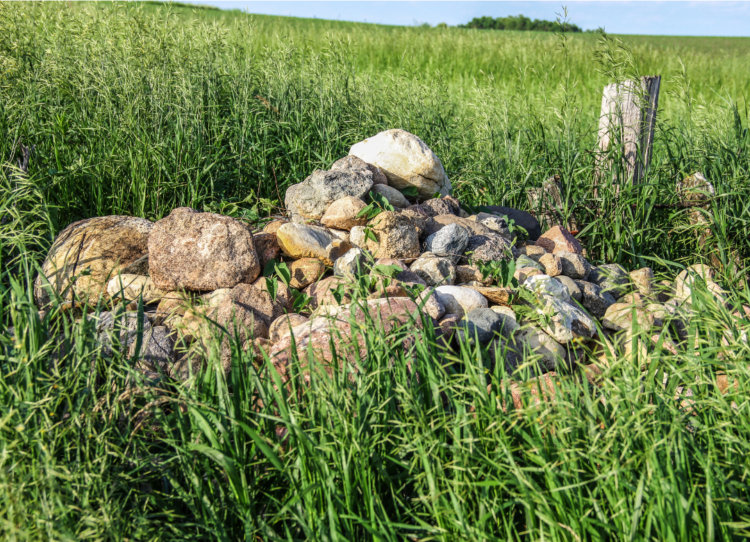
Wildlife comes in all different shapes and sizes. Even in a small amount of space, you can make habitat for tiny animals. Rockpiles are a great way to make micro-habitat in your outdoor space. They can provide hiding and lodging places for chipmunks, different kinds of insects, reptiles, amphibians, and more. Similarly to brushpiles, you’ll want to keep an eye on them in urban areas to make sure that rats don’t move in. In more rural areas, snakes will probably take care of that problem for you!
Rockpiles are a fantastic way to boost a pollinator garden. This is because many insects shelter inside of rockpiles and other debris to survive the winter. By having more winter shelter for pollinators, you can increase the number and diversity of pollinators in your space.
You don’t have to go out and buy rocks to build a good rockpile. For example, when you’re planting or digging flowerbeds, collect the rocks that you dig up. If you consistently toss them to one side of your yard, you can eventually use these to start a pile. Brick, old cement blocks, and broken pieces of flagstone or roof tiles will work just as well. Adding some rock features will take your natural gardening to the next level.
Want to learn more? Books on Natural Gardening
Here are some more excellent books on how to create a wildlife garden.
- The Ecological Gardener: How to Create Beauty and Biodiversity from the Soil Up by Matt Rees-Warren
- Attracting Birds, Butterflies, and Other Backyard Wildlife: 17 Projects & Step-by-Step Instructions to Give Back to Nature, by David Mizejewski. This guide from the National Wildlife Federation includes in-depth guides to implementing the tips in this blog post and more!
- The Living Landscape: Designing for Beauty and Biodiversity in the Home Garden by Rick Darke and Doug Tallamy
Thanks for reading about Natural Gardening!
Do you have any tips for bringing wildlife to your yard? Let me know in the comments! If you have additional questions or topics that you’d like to see on the blog, shoot me a message using the contact form. Until next time!

